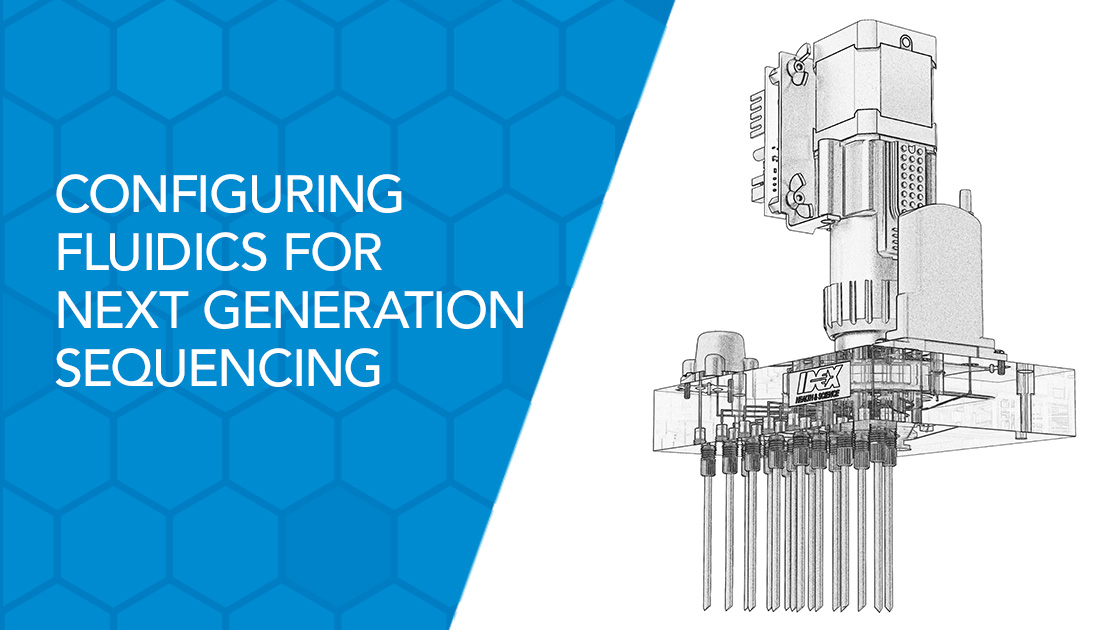FAQs When Configuring Fluidics for a Next-Generation Sequencer
Nov 21, 2023
by
IDEX Health & Science

- How small can you make your fluidic pathways?
Answer: We commonly precision manufacture internal diameters of our components, including valves and manifolds, to 500µm ±125µm (0.020” ±0.005”).
Should you need smaller channel IDs we are happy to work with you on your custom needs.
- What is the advantage of using IDEX Health & Science versus obtaining separate materials and assembling them myself or at a CM?
Answer: Accurate tolerancing of all components along the fluidic path is critical to a robust,
reproducible instrument design. At IDEX Health & Science, we not only work with you to design a robust fluidic subsystem, but we can also simulate your design before manufacture and assembly to show you potential fluidic issues. We work with
you to identify and correct problems before they arise, saving you valuable time in your early stages. Additionally, an integrated subsystem from IDEX helps you consolidate the number of SKUs you must manage.
- Do your solutions include a PCB?
Answer: Our valve and vacuum degassing products can include a PCB. We also offer you complimentary access to our IDEX Health & Science Library — powered by Python™ — for easy startup of your breadboard solution.
- Do your fluidics work in positive (push through) or negative (pull through) mode?
Answer: Our fluidics can be customized and adapted for either case, depending on whichever solution is best suited for your sequencing needs.
- What functional testing is available to ensure instrument performance?
Answer: Typical testing includes pressure decay to guarantee leak-free components and subsystems, flow occlusion to test for passage blockages, system pressure
to ensure the fluidics function, as well as fluid volumes as specified per your application.
- What materials are available for manifolds?
Answer: IDEX Health & Science typically utilizes PMMA (Acrylic) and PEI (Ultem 1000) for complex bonded manifolds. We recommend PMMA for systems with inert reagents; PEI is better
suited for applications utilizing more aggressive reagents (i.e., solvents). IDEX Health & Science also offers a wide variety of polymers (e.g., PEEK, PVC) for simple, cross-drilled manifolds.
View our Next Generation Sequencing Capability Guide to Learn More


